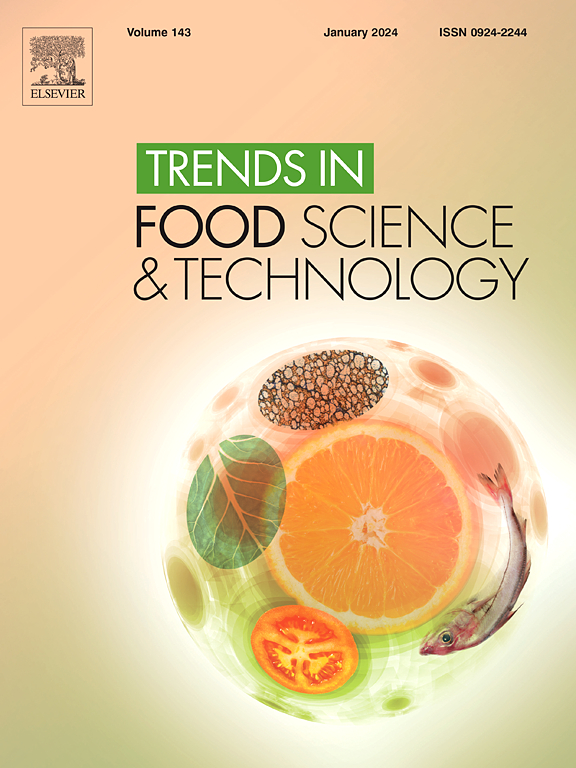Valorization of animal by-product enzymes: Advancing sustainable food processing through innovative extraction, purification, and application strategies
IF 15.1
1区 农林科学
Q1 FOOD SCIENCE & TECHNOLOGY
引用次数: 0
Abstract
Background
The sustainable management of food processing by-products is important in the global food industry. By-products from the processing of animals, including mammals, poultry, and fish, are frequently regarded as waste materials. However, these by-products are rich sources of enzymes with significant potential for diverse applications.
Scope and approach
This contribution aims to explore the valorization potential of enzymes from animal by-products. It examines the enzyme types and functions, detailing the methods used for extraction, purification, and identification. It also reviews their applications in the food industry. Additionally, this review assesses both the advantages and challenges, and it proposes future directions.
Key findings and conclusions
Enzymes such as proteases (notably collagenases) and lipases have been identified in animal by-products, offering significant opportunities for food quality enhancement and waste valorization. Advanced extraction and purification methods, including affinity chromatography, gel filtration chromatography, and their combined use, have been developed to isolate these enzymes with high yield and purity. The application of these enzymes in food processing has demonstrated substantial benefits, including enhanced flavors, improved texture, and increased product stability. This review also emphasizes the wide range of sources and types of animal by-product enzymes and the importance of their functional applications. In addition, it discusses in-depth analyses of the key technological and market factors restricting the development of animal by-product enzymes. With a view to further advancing the food industry to achieve economically and environmentally green and sustainable development, it proposes solutions through efficient use of animal by-product enzymes.
求助全文
约1分钟内获得全文
求助全文
来源期刊

Trends in Food Science & Technology
工程技术-食品科技
CiteScore
32.50
自引率
2.60%
发文量
322
审稿时长
37 days
期刊介绍:
Trends in Food Science & Technology is a prestigious international journal that specializes in peer-reviewed articles covering the latest advancements in technology, food science, and human nutrition. It serves as a bridge between specialized primary journals and general trade magazines, providing readable and scientifically rigorous reviews and commentaries on current research developments and their potential applications in the food industry.
Unlike traditional journals, Trends in Food Science & Technology does not publish original research papers. Instead, it focuses on critical and comprehensive reviews to offer valuable insights for professionals in the field. By bringing together cutting-edge research and industry applications, this journal plays a vital role in disseminating knowledge and facilitating advancements in the food science and technology sector.
 求助内容:
求助内容: 应助结果提醒方式:
应助结果提醒方式:


